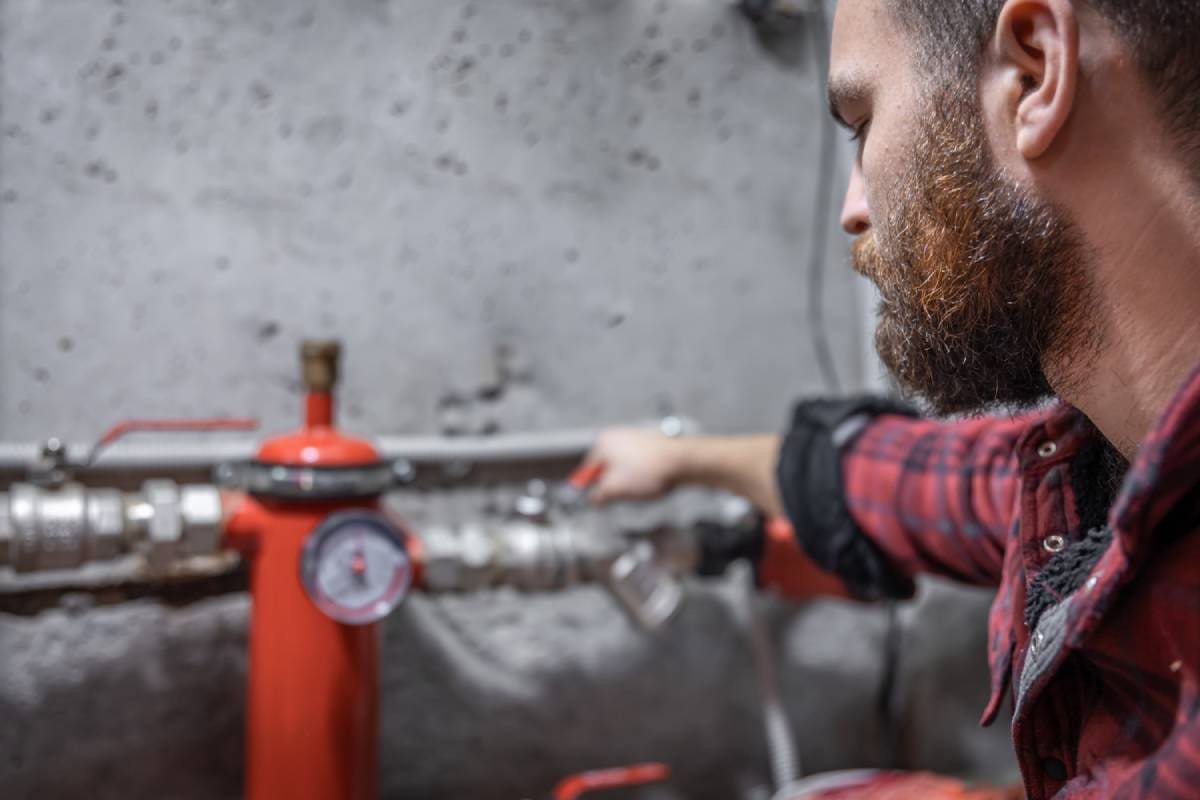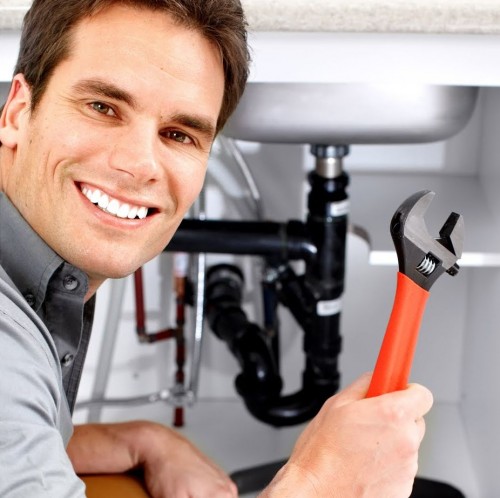Understanding Home Plumbing Basics: A Beginner's Tutorial
Understanding Home Plumbing Basics: A Beginner's Tutorial
Blog Article
The content down the page about Plumbing Basics For Every Home: The HomeTriangle Guide is definitely informative. Check it out yourself and decide what you think of it.

Plumbing is a necessary element of any home, in charge of supplying tidy water for drinking, food preparation, and showering, along with removing wastewater safely. Recognizing the fundamentals of home plumbing is essential for each home owner to make certain proper maintenance, troubleshooting, and, if required, repair work. In this novice's guide, we'll cover the essential ideas of home plumbing to assist you end up being a lot more familiar with how it functions.
Water System
The water system brings tidy water into your home from a municipal water source or a private well. It contains a main water line that attaches to your home's plumbing system, usually situated underground. A water meter gauges the quantity of water taken in, while a shut-off valve enables you to regulate the flow of water into your home.
Plumbing Fixtures
Plumbing components are tools that deliver water to different parts of your home and consist of sinks, faucets, toilets, showers, bath tubs, and appliances such as dish washers and washing makers. Each component is attached to the supply of water system via pipes and fittings and might have its shut-off shutoff for upkeep or emergency situations.
Water Heating Unit
The water heating system is accountable for heating water for domestic use, including bathing, food preparation, and cleaning. Common types of water heaters include tank-type water heaters, tankless (on-demand) water heaters, and heatpump hot water heater. The hot water heater is connected to the supply of water system and supplies warm water to plumbing components as needed.
Drain System
The drainage system gets rid of wastewater from your home and brings it away to a sewage treatment center or septic system. It contains a network of pipes, installations, and fixtures that transport wastewater from plumbing fixtures to the primary sewer line or sewage-disposal tank. Proper water drainage is essential to prevent blockages, backups, and sewage leaks.
Ventilation System
The air flow system helps preserve proper air pressure and prevent drain gases from entering your home. Air vent pipelines, also referred to as air vent stacks, expand from plumbing fixtures to the roof, enabling drain gases to run away safely outside. Air flow pipelines also permit air to go into the water drainage system, helping with smooth wastewater circulation and protecting against suction or vacuum impacts.
Usual Plumbing Tools
Having the right tools handy is essential for performing fundamental plumbing repair services and upkeep tasks. Common plumbing tools consist of flexible wrenches, pipe wrenches, pliers, pipe cutters, hacksaws, plungers, augers (or drain serpents), and Teflon tape. Having these devices easily offered can aid you tackle minor plumbing problems effectively.
Standard Plumbing Repairs
While some plumbing repair work might call for specialist assistance, numerous typical problems can be resolved with standard do it yourself methods. Understanding just how to fix a leaky faucet, unclog a drain, replace a toilet flapper, or repair a dripping showerhead can conserve you money and time on plumbing fixings.
Verdict
Understanding the basics of home plumbing is vital for each house owner to preserve a risk-free, practical, and efficient plumbing system. By familiarizing yourself with the supply of water system, plumbing fixtures, drainage system, ventilation system, common plumbing devices, and standard fixings, you can with confidence attend to small plumbing concerns and guarantee your home's plumbing system runs smoothly.
Plumbing for Beginners: A Comprehensive Guide
If you’re a beginner when it comes to plumbing, don’t worry; you’re not alone. Plumbing may seem intimidating, but with the right knowledge and a little practice, you can handle many common plumbing issues on your own. In this comprehensive guide, we will demystify the world of plumbing for beginners, providing you with the basic knowledge and skills needed to tackle common plumbing problems and even take on some DIY plumbing projects.
The Importance of Basic Plumbing Knowledge for Beginners:
First and foremost, basic plumbing knowledge gives you a solid foundation. It helps you grasp the key concepts and terminology that are essential in this field. By learning the basics, you’ll be able to build upon that knowledge and tackle more complex plumbing tasks in the future.
Having a basic understanding of plumbing also enables you to handle common issues that may arise in your home. Picture this: a leaky faucet or a clogged drain. With some basic plumbing knowledge, you’ll have the confidence to troubleshoot and fix these problems on your own. It saves you from unnecessary expenses and the hassle of waiting for a professional to arrive.
As a beginner, learning the basics of plumbing empowers you to take care of your own home. It gives you a sense of independence and self-reliance. You’ll no longer have to rely solely on professionals for every small issue that pops up. Instead, you can handle many tasks yourself, saving time and money in the process.
Remember, everyone starts as a beginner. Embrace the learning process and take small steps to expand your plumbing knowledge. There are plenty of online resources, tutorials, and even local workshops that talk about plumbing for beginners.
Essential Tools for Plumbing for Beginners
As you start your plumbing journey, having the right tools in your toolbox is crucial. Let’s explore some of the must-have tools:
Adjustable Wrench:
This versatile tool is a staple in any plumber’s toolbox. It allows you to tighten or loosen nuts and bolts of various sizes. Make sure to have an adjustable wrench with a comfortable grip.
Pipe Wrench:
A pipe wrench is specifically designed for gripping and turning pipes. It has serrated jaws that provide a strong grip, making it easier to loosen or tighten threaded pipes and fittings.
Plunger:
The plunger is a simple yet effective tool for clearing clogged drains and toilets. It creates suction when you push and pull, helping to dislodge blockages. Keep a good-quality plunger handy for those unexpected clogs.
Pipe Cutter:
When it comes to cutting pipes, a pipe cutter is your go-to tool. It creates clean, precise cuts without damaging the pipe. Look for a pipe cutter that can handle the pipe sizes you’re working with.
Hacksaw:
A hacksaw is useful for cutting through pipes, screws, and other materials. It’s a versatile tool that can handle different cutting tasks. Remember to use a blade suitable for cutting metal.
Tape Measure:
Accurate measurements are crucial in plumbing. A tape measure allows you to measure pipe lengths, distances, and dimensions accurately. Opt for a sturdy tape measure that extends a good length.
Pliers:
Pliers come in handy for various tasks, such as gripping, bending, and cutting. Slip-joint pliers with adjustable jaws are great for gripping pipes, nuts, and bolts.

Do you really like reading about What to Know About Plumbing: Basics, Tips, and Insights? Put a remark further down. We'd be pleased to see your thinking about this post. We are looking forward that you visit us again before long. Sharing is nice. You just don't know, you could be doing someone a favor. Thanks a lot for being here. Kindly pay a visit to our site back soon.
Need Help? Hire Us Now! Report this page